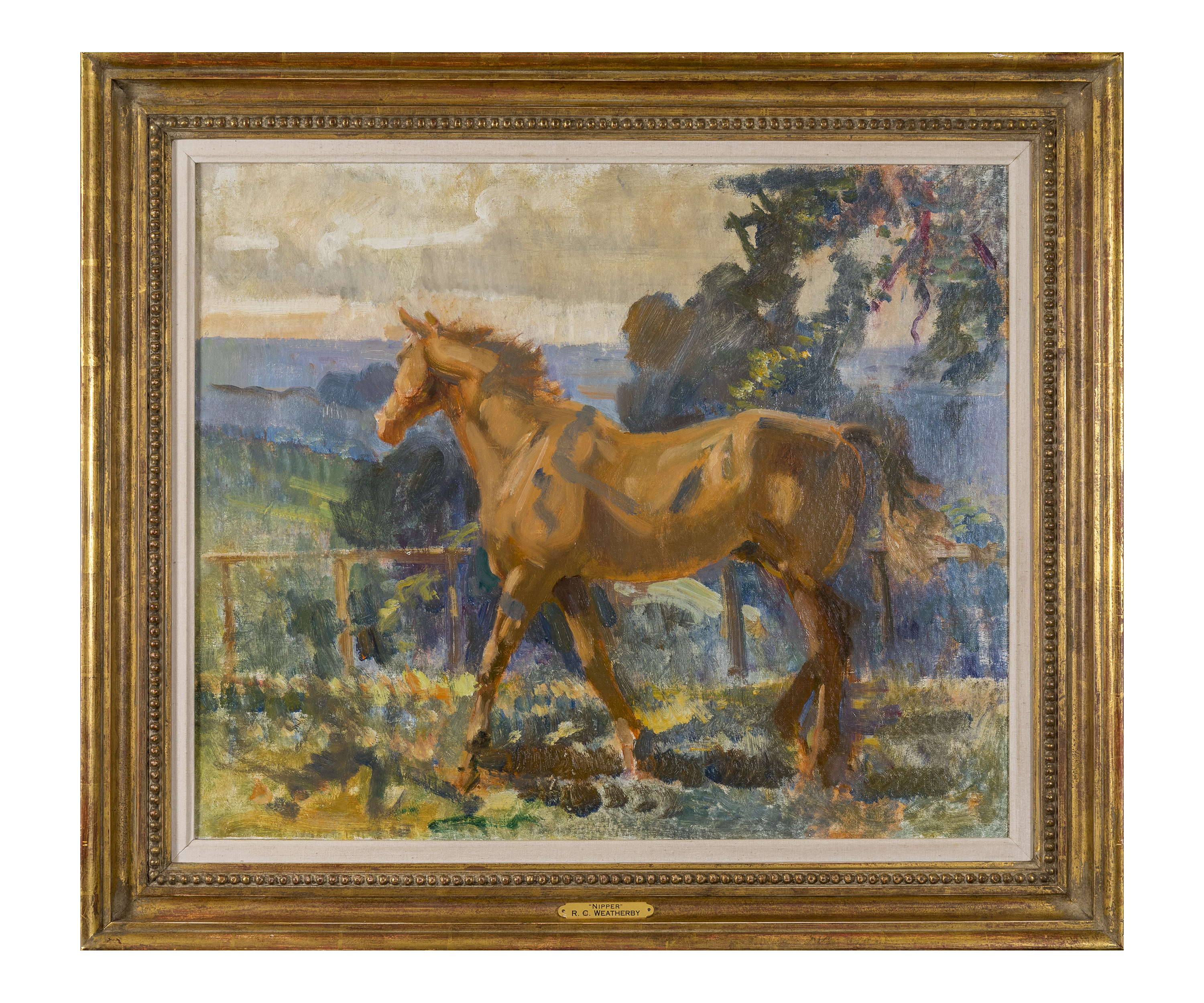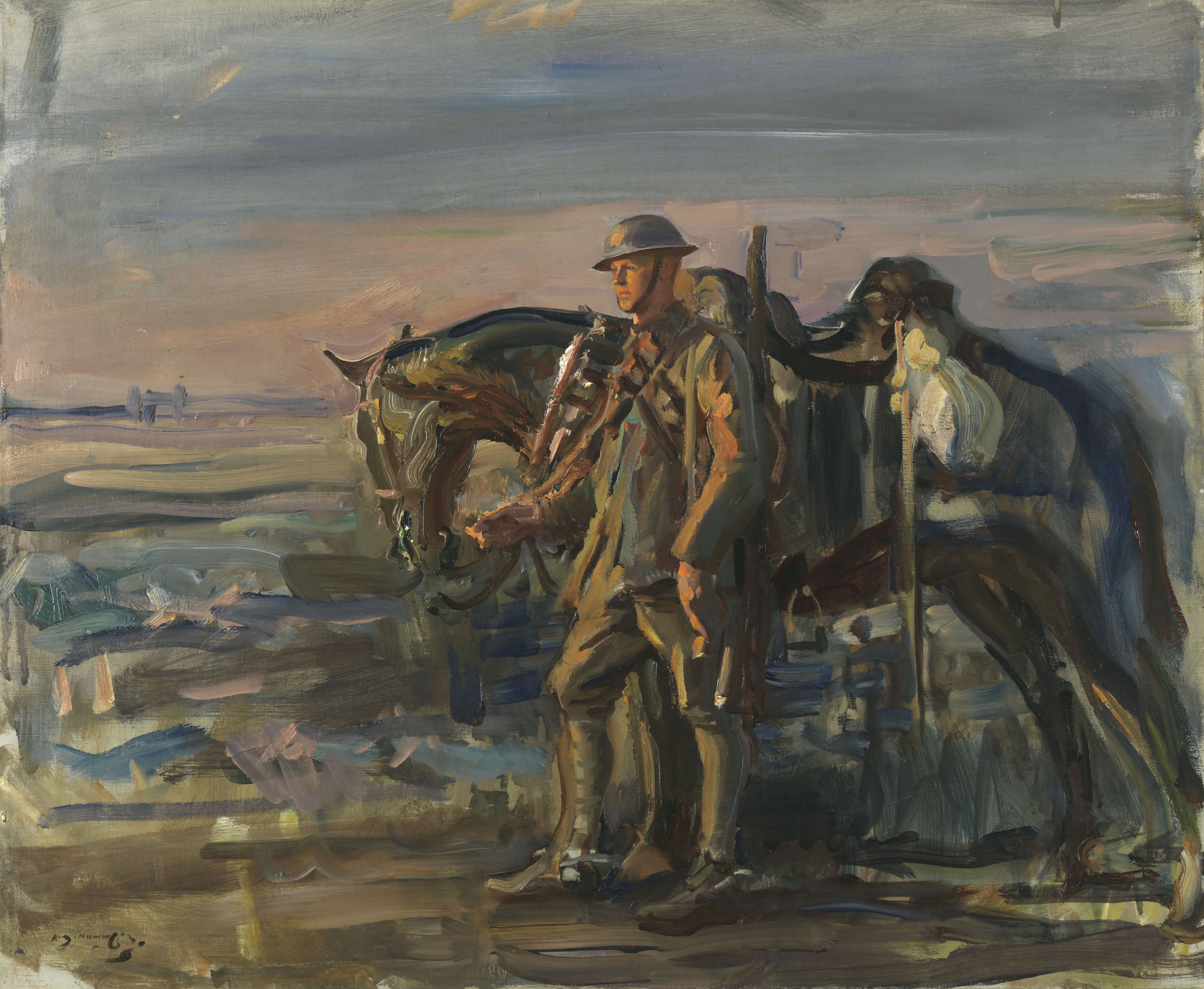My favourite painting: Dan Skelton
Racehorse trainer Dan Skelton picks a classic Munnings image.


Dan Skelton on Study of ‘The Start’ by Sir Alfred Munnings
'I’ve always been interested in how artists have depicted equine movement and I feel Munnings captured it perfectly. This start of a race scene has a number of horses in different poses, and each represents brilliantly what is going to happen on this day.
'You can sense that the horse in the foreground is keen to get started, but that the jockey is thinking otherwise; the jockey in yellow isn’t happy with his position so is moving; the horse whose head is bowed low and the most forward of all is most likely to lead the field. Munnings lost an eye in 1898, but it certainly didn’t impede his eye for detail.'
Dan Skelton is a racehorse trainer.
John McEwen on Study of 'The Start'
‘I think Munnings was greater than Stubbs,’ said Augustus John, after his friend’s July memorial service, to which John wore a wide-brimmed straw hat painted black for the occasion. ‘He made it move, had greater narrative quality and the groupings are better.’
This is never more applicable than to Sir Alfred Munnings’s paintings of racing starts, mostly worked on at Newmarket, where he had a rubbing house converted into a studio. The start, before the introduction of starting stalls for Flat racing, particularly challenged his ability to capture movement as the riders jockeyed for position. He wrote: ‘The grouping, the movement-colour, all dependent on the lighting; the sky. Orange satin, cerise-and-white, blue-and-yellow, emerald green — a large field waiting, waiting, regrouping. At each start determined to retain the picture in my mind.’
His attempts to convey the excitement of the finish were never so successful. But, as he said in his notoriously anti-Modern-art farewell speech as president of the Royal Academy at its 1949 annual summer show banquet: ‘I myself would rather have… a damned bad failure… than all this affected juggling, this following of what — shall we call it the School of Paris?’ This first post-war banquet was still men only, with even the five female RAs being excluded.
Munnings’s ashes were laid in the crypt of St Paul’s Cathedral, where a memorial tablet is dedicated to him next to that of another famous artist son of a Suffolk miller, John Constable. The tablet is engraved with lines written on Munnings’s death by one of his friends, John Masefield, the then Poet Laureate: ‘O friend, how lovely are the things/The English things, you helped us to perceive.’
My favourite painting: Susan Crawford
'You can feel and smell that horse and the exuberant confidence of the lad riding bareback.'

My Favourite Painting: Roger Weatherby
Roger Weatherby — the CEO of his family firm, Weatherbys Banking Group — chooses an equestrian picture from his family's collection,
Exquisite houses, the beauty of Nature, and how to get the most from your life, straight to your inbox.

My Favourite Painting: Kit Kemp
Designer and author Kit Kemp chooses Lucy Kemp-Welch's The Straw Ride, a study of the horses of the First World

My favourite painting: Emma Bridgewater
'For me, it’s like a prayer. Or a meditation,' says Emma Bridgewater of her favourite painting.

How to make a delicious chestnut chocolate cake with a fluffy meringue topping
If you still have chestnuts left over from Christmas, here's a fun way to turn them into a family favourite.

In Focus: The wartime masterpieces of Alfred Munnings
Huon Mallalieu welcomes the opportunity to see a significant body of wartime paintings alongside other works by Munnings in his
Country Life is unlike any other magazine: the only glossy weekly on the newsstand and the only magazine that has been guest-edited by His Majesty The King not once, but twice. It is a celebration of modern rural life and all its diverse joys and pleasures — that was first published in Queen Victoria's Diamond Jubilee year. Our eclectic mixture of witty and informative content — from the most up-to-date property news and commentary and a coveted glimpse inside some of the UK's best houses and gardens, to gardening, the arts and interior design, written by experts in their field — still cannot be found in print or online, anywhere else.
